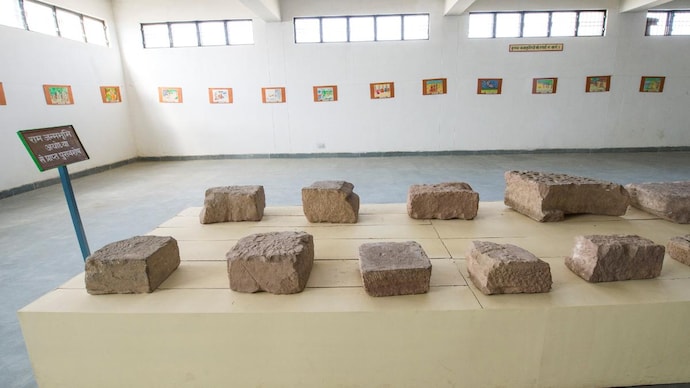Ayodhya verdict: The ASI findings Supreme Court spoke about in its judgment
Reading the "unanimous" judgment on the Ayodhya title suit in a packed courtroom on Saturday, CJI Ranjan Gogoi there is clear evidence that Hindus believe Lord Ram was born at the disputed site. "Babri Masjid was not constructed on vacant land. There was a structure underlying the disputed structure. The underlying structure was not an Islamic structure," the bench said.

In Short
- In its judgment, the Supreme Court referred to an ASI report
- It observed that the Babri Masjid was not built on vacant land
- There is clear evidence that Hindus believe Lord Ram was born at the disputed site, CJI said
The Supreme Court on Saturday pronounced its verdict on the Babri Masjid-Ram Janmabhoomi title suit, clearing the way for the construction of a Ram temple at the 2.77-acre disputed site in Ayodhya. A Supreme Court Constitution bench led by Chief Justice of India Ranjan Gogoi dismissed the Shia Waqf Board's petition to be considered an appellant in the case as well as the claim of Nirmohi Akhara.
The Supreme Court order recognised the deity Ram Lalla's title rights to the disputed 2.77-acre Ayodhya land and directed the government that a trust be set up to manage the land's affairs, paving the path for the construction of a Ram temple. The Supreme Court has directed that the Sunni Waqf Board be given a five acres of land in Ayodhya for the construction of a mosque.
Ayodhya verdict LIVE updates: Ram Mandir at disputed site, mosque on separate five-acre land
In its judgment, the Supreme Court referred to an Archaeological Survey of India (ASI) report to observe that the Babri Masjid, which stood on the disputed site until its demolition in 1992, was not built on vacant land and that there was evidence of a temple-like structure having existed on the land before the mosque was built.
Reading the "unanimous" judgment on the Ayodhya title suit in a packed courtroom on Saturday, CJI Ranjan Gogoi there is clear evidence that Hindus believe Lord Ram was born at the disputed site. "Babri Masjid was not constructed on vacant land. There was a structure underlying the disputed structure. The underlying structure was not an Islamic structure," the bench said.
The Supreme Court said the demolition of the Babri Masjid was a violation of law and order. The court said that ownership cannot be given on the basis of faith and trust. Reading the judgment, the Supreme Court said that the Babri Masjid was not built on empty land.
Considering the ASI report valid, the Supreme Court said what was found in the excavation "was not an Islamic structure".
SITE EXCAVATION
About 15 years ago, the Archaeological Survey of India excavated the disputed land in Ayodhya following the orders of the Allahabad High Court.
The Supreme Court said the underlying structure below the disputed site in Ayodhya was not an Islamic structure, but the ASI has not established whether a temple was demolished to build a mosque.
The underlying structure found was scientifically tested by the ASI team. After this, it was claimed that there were remains of an ancient Hindu temple under the disputed structure.
The Hindu also side argued that there were carvings of deities, Hindu religious symbols on stone pillars under the disputed site.
ASI report on Ayodhya site excavation to be published as book
Meanwhile, Union Culture Minister Prahlad Patel said on Saturday that the ASI report which was submitted in the Supreme Court after excavation at the Ram Janmabhoomi-Babri Masjid site will be published as a book.
Speaking to reporters after the apex court verdict clearing the way for the construction of the Ram temple at the disputed site in Ayodhya, Patel congratulated the ASI team which prepared the report.
"The ASI report which till now was the property of the court will soon be published in the form of a book for the public," he said.
